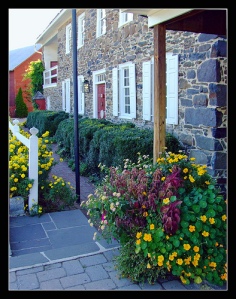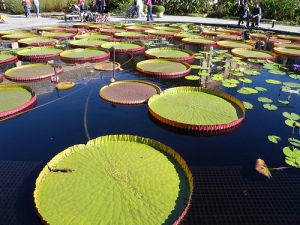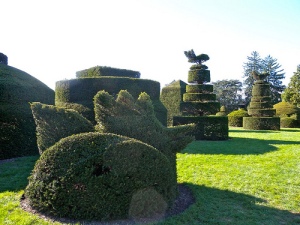“Oh, you should have been here last week” people say – or, “You’re going to miss a big one next weekend”. We’ve yet to be at the right site at the right time to experience a re-enactment. This time, we violate the sanctity of the spontaneous RV lifestyle, and plan ahead by a day or two to be here at Cedar Creek Battlefield for a huge re-enactment weekend.
And I mean, huge. There are thousands of Confederate and Union troops, camped in endless rows of small canvas tents, facing off across the far sides of the hilly battlefield. Their respective camps are teeming with activity, costumed re-enactors are cooking over campfires, tending to horses, readying cannons and small weapons, napping, reading, talking and laughing. We walk among them and marvel. The rule is everything has to be consistent with the time period and circumstances, so if any spectator takes a photo or video, nothing would appear out of place. Did I mention, the historically accurate food and coffee smells really good?
It looks like so interesting and fun that I flirt with the idea of becoming a re-enactor in Wisconsin when we get home. But after checking out possibilities on the internet, I realize that the opportunities are pretty limited, especially for women.
The battle itself is frighteningly realistic. Spectators crowd the hillside overlooking the battle scene. We hear that it’s one of the few re-enactments that takes place on the actual ground of the original battle. Calvary soldiers fight and “die” in front of us. Custer is there and General Sheridan, who heard the thundering cannon from Winchester, VA, and arrives, amid cheers, to take command and rally the Union troops.
After the smoke clears and the crowds begin to disperse we head to Creekside Campground in nearby Edinburg for a two-day furlough along a gurgling creek. An extremely friendly group of ducks waddle out of the water at our campsite; I feed them all our hot dog buns and they lay down at my feet and take an after-dinner nap around my chair for about half an hour, occasionally raising their heads, quacking at me gently, then settling back to sleep. I’m touched and enthralled by the whole thing. The other big plus to staying here is that Sal’s Italian Restaurant is within easy walking distance, so we eat there both nights, and have abundant leftovers for lunch while we watch the Packer game.























